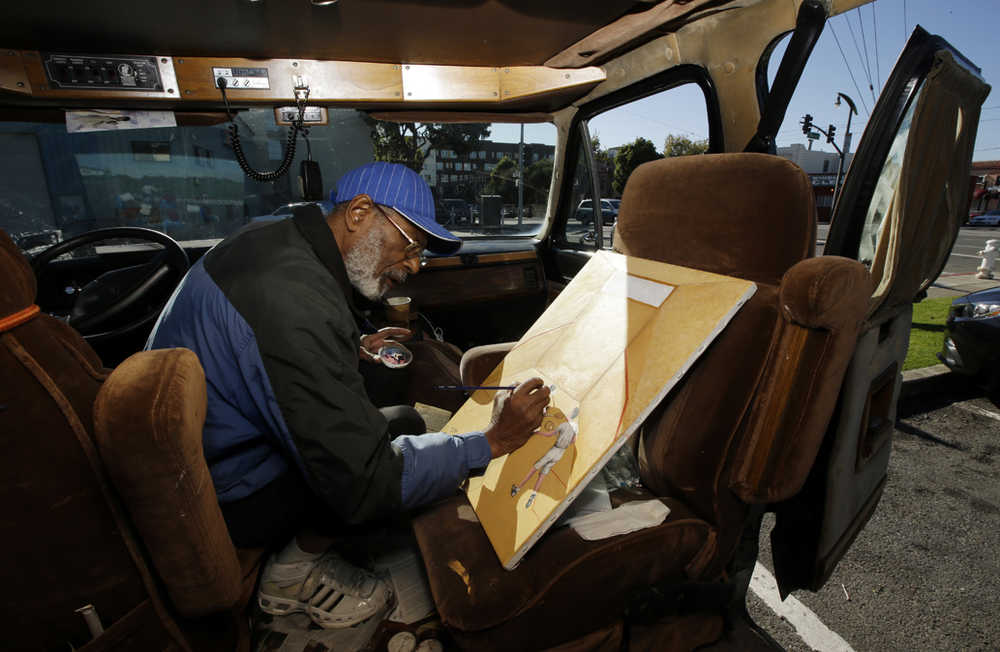SAN FRANCISCO — Tired of paying nearly $4,000 a month for a one-bedroom in San Francisco’s popular South of Market district, two newlyweds last year bought a townhouse in a budding development along the city’s rough-edged southeastern bay-front.
Friends warned Eyitejumade and Jinglin Sogbesan that the historically black Bayview-Hunters Point was a dangerous place. But Eyitejumade Sogbesan, 39, a Nigeria native and former investment banker, ignored them.
A $500,000 two-bedroom with parking seemed a bargain in a city where modest homes fetch $1 million.
As San Francisco rides a massive building boom reminiscent of post-World War II, fueled largely by growth in tech-based jobs, developers are finally wading into a part of the city long plagued by too much poverty and not enough fresh produce markets.
But as modern dwellings crop up, there are fears that the city’s dwindling population of African Americans will not be able to afford the neighborhood that writer James Baldwin once called “the San Francisco America pretends does not exist.”
“I love this place. This is really home,” said Dwight Brown, a jobs activist standing outside his office on Third Street, a rundown commercial strip. “But the writing on the wall was they’re taking it away from us.
“You’re not going to be able to live in San Francisco, unless you stand and fight for it.”
As San Francisco’s population climbed to an estimated 860,000 this year, the number of African Americans has plummeted from 100,000 in 1970 to fewer than half that today. Blacks, who comprised a third of Bayview-Hunters Point residents in 2010, are being priced out or have sold their property, trading rising equity in their homes for quieter lives in the suburbs.
City leaders say the new development should help preserve the city’s black community. As evidence, they point to plans for new senior and public housing, as well as recent legislation requiring that 40 percent of new affordable units go to residents.
“People heard so many different promises for years and now, they literally see the manifestation of years of advocacy and work and disappointment. This is for you,” said San Francisco Supervisor Malia Cohen, whose great-aunts once lived in a city housing project.
Bayview-Hunters Point is one of the last major frontiers for San Francisco development, encompassing more than a square mile of undeveloped land in a cramped city of 49 square miles. It is sunnier than many areas, with spectacular views of the San Francisco-Oakland Bay Bridge and downtown.
The neighborhood is perhaps best known as home of Candlestick Park, where the Giants and 49ers played for decades before moving to new venues. But the area has a rich history.
Once called Butchertown for the slaughterhouses of yesteryear, Bayview-Hunters Point has long served as a place of pioneers, including Italians and Maltese — and after World War II, thousands of blacks who left the South for jobs at the naval shipyard.
There was a thriving blue-collar middle class. But when the shipyard closed in 1974, work dried up and gangs came to rule, especially in its public housing projects. Neighborhood tensions with police remain high, especially after five officers on Dec. 2 fatally shot a 26-year-old knife-wielding suspect who was black.
Still, daily life for many defies Bayview-Hunters Point’s reputation as a dangerous place.
On a recent afternoon, formerly homeless Thomas Bailey sold gumbo and ribs from a makeshift stand outside the vintage 1888 Bayview Opera House. At a nearby senior center, old-timers from places such as Mississippi and Texas chatted away. Blocks away, tight friends goofed around on a hover board and bicycle.
“We got good people here, hard-working people,” said Allen Jordan, co-owner of Sam Jordan’s Bar and Grill, named after his father, who was San Francisco’s first black candidate for mayor. “A lot of people have a fear of coming here, without ever being here.”
In 2008, voters approved a measure allowing the development going on today.
Lennar Urban plans to construct 12,000 housing units on the sites of the former shipyard and now-demolished Candlestick Park, nearly doubling the population of 35,000. There are plans for a luxury shopping center at the old park and for rebuilding the dreary 1963 Alice Griffith housing project, marred by broken windows and boarded up units.
“We need a change,” said resident Robin Robinson. “If people are living a little bit better, maybe they’ll feel a little better.”
Eyitejumade Sogbesan, the newcomer, said buying a home in one of the most expensive cities in the country is good for his family, which includes an infant daughter. Plus, he said, “I will be part of a community that will be evolving into something much different.”
Terrance Everette, a father of one, escaped a tumultuous life in Bayview-Hunters Point to find stable work and housing in a suburb. Yet the power company subcontractor, 41, longs to return, to be part of the evolving community where techies and other professionals are snapping up homes.
“It’s a dream to stay where you’re from. It’s a culture shock to send you elsewhere,” he said. “I’d rather be home.”

